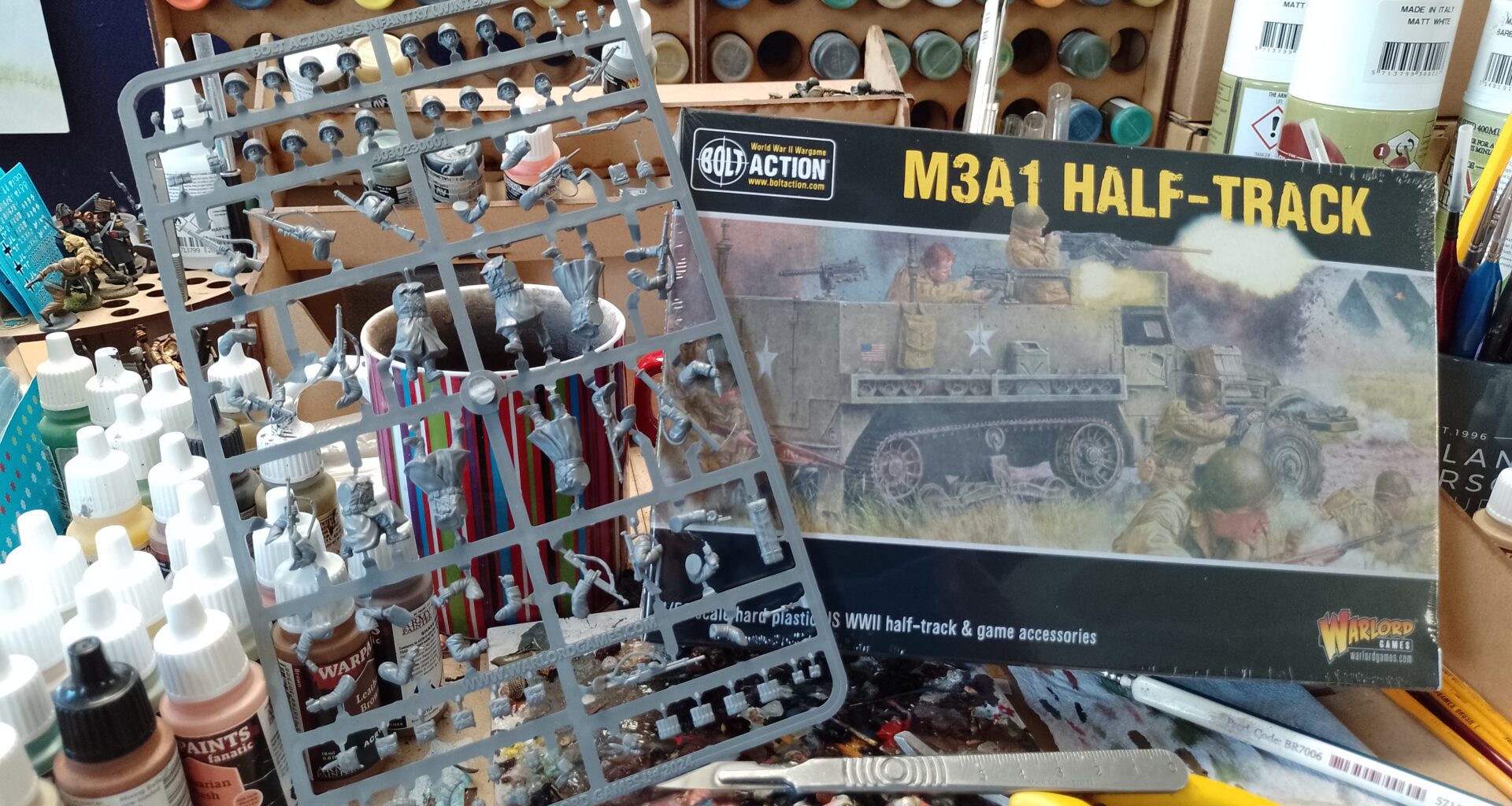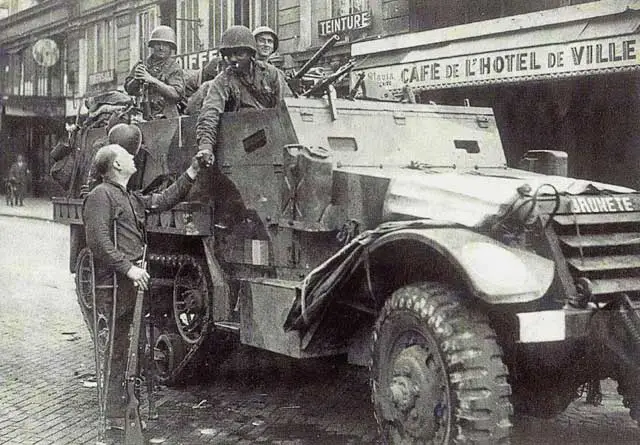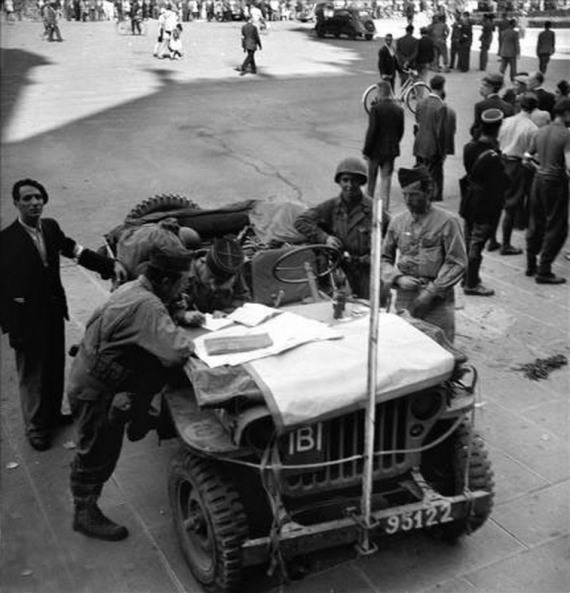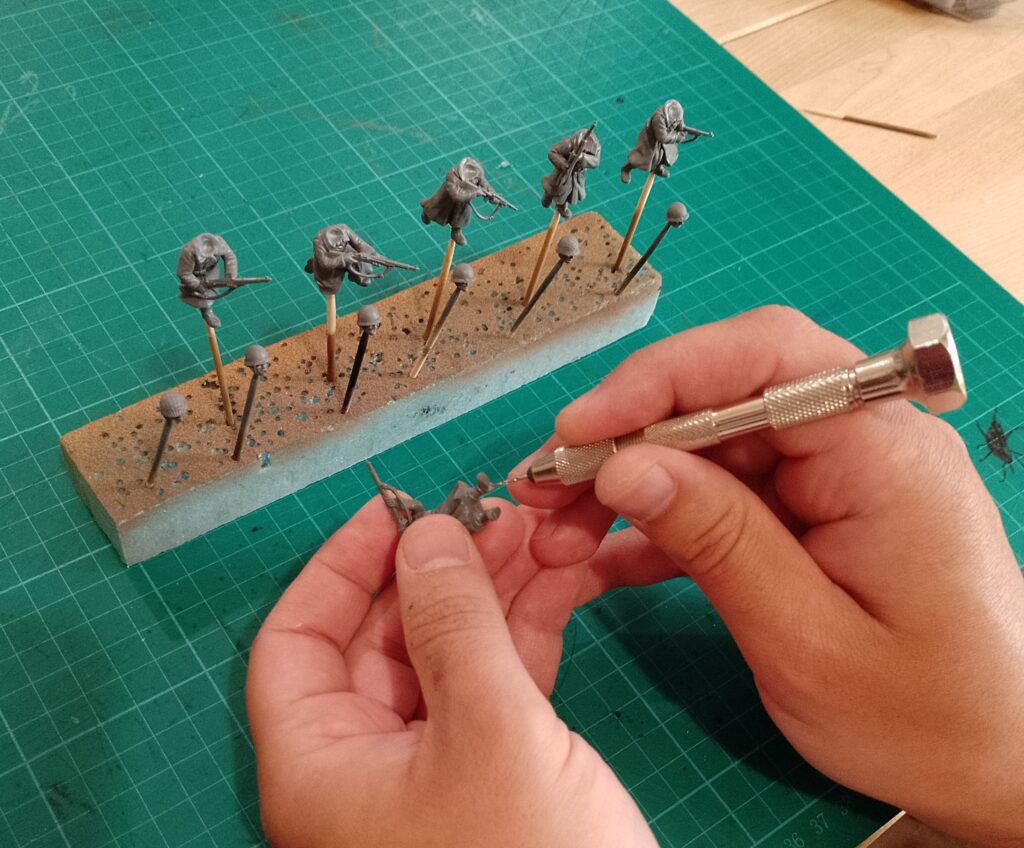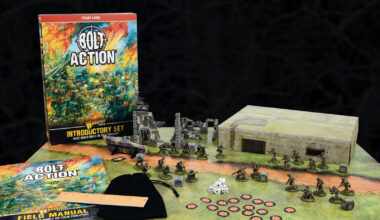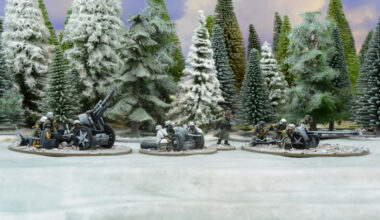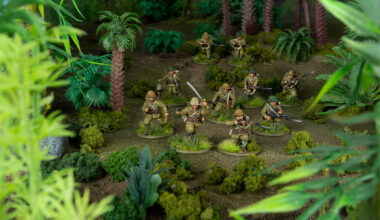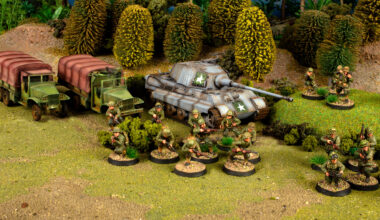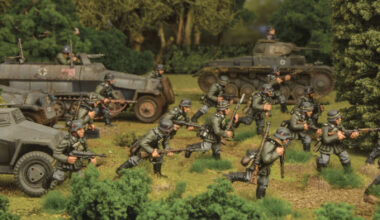MV – Studio Painter Andrés Amián is an unstoppable hobby machine (a useful trait for a chap who paints toy soldiers for a living!), and he’s back again with the first stirrings of a new project. We recently looked at his Spanish Blue Division, and he’s continuing the Iberian theme now with Spanish troops in Free French service. What’s on the menu, Andrés?
AA – In my quest to recreate Spanish forces throughout history, I’ve started a new Bolt Action project. I haven´t finished with my Spanish Blue Division yet, but I now have enough platoons to play some battles with them. I would like to add some more things to that force, but while I decide what to build and paint next, I’ve turned my attention to something new. This time I´m building the 9th Companie of the Leclerc 2nd Armoured Division, or ‘la Nueve‘ as it was popularly known. It was a full armoured company of Spaniards, transported in US half-tracks – M2s, M3s, and M5s. This makes it a great opportunity to paint and convert vehicles, as well as to learn about a less well-known formation!
La Nueve was formed by veterans and other volunteers who had escaped Spain after the Civil War. These men were a mix of Republicans, Anarchists, and other disaffected individuals who had enlisted in the Free France Army. They initially fought in North Africa, and would later be issued US equipment. Aesthetically, they look like American troops, but with some details that reveal their Spanish origins. The men were allowed to wear the Spanish Republican flag on their right arms, and all the vehicles in the company had Spanish names.
I´m a painter, and naturally that’s what I enjoy the most. However, I always do some basic research to try to represent things as accurately as I´m able to – this is historical wargaming, after all! I had a bit of a previous knowledge, but I wanted to know the exact names of the vehicles. La Nueve was divided into three groups, each of them composed of five halftracks, with mortar and machine gun support, and a 57mm anti-tank gun towed by one of the vehicles.
I found a very helpful blog, with a lot of information about the La Nueve, including a list of many half-tracks, their names, and if they were replaced or upgraded during their time at the front, as well as plenty of photos – some of which you can see here. Another good thing is that there are a lot of good pictures of the vehicles and their crew. Some especially fine ones were taken during the victory parade after the liberation of Paris, in which La Nueve played an important role, being the first troops to engage the Germans in conjunction with the French Resistance. The halftrack ‘Ebro’ was the first to open fire against the German HQ, and after the fighting, German forces surrendered to them. During the parade, they initially flew Republican flags, but only for a moment, since they were made to remove them. Many people thought they were Frenchmen, receiving quite a shock when they opened their mouths!
Once I got the main facts clear, I needed the army list to represent la Nueve in the best possible way for Bolt Action. I plan on doing one of the three groups in full, with the addition of the company’s command section. The command section was formed of a Jeep called ‘Mort aux cons‘ and the half-track ‘Les Cosaques’. Then I would need five half-tracks using a mixture of different variants, bearing the names ‘Resistence‘, ‘Teruel‘, ‘España Caní‘, ‘Nous Voilá‘ and ‘Ebro‘. Of those five vehicles, three will carry riflemen, one a medium machine gun team, and the last one will have a medium mortar team. The sixth vehicle, the ‘Ebro‘, will be the tow for the anti-tank gun.
This project will be a good opportunity to do some simple conversions on the vehicles to make
them unique to the force. For the infantry, I’ll be making use of both the regular and winter US Army kits. La Nueve took part in the Normandy landings as part of the follow-up waves, through France and into Paris as previously mentioned, and would eventually find themselves sitting alongside the US 101st Airborne at the ‘Eagle’s Nest’. By this time only fourteen of the original Spanish soldiers remained – I figure the mixture of kits is a good way to represent the war-weary nature of the unit.
On to assembly! I started with one of the infantry squads and their trusty mount. I always follow the same procedure when building and painting. First, I cleaned all the mould lines and assembled the bodies with all their equipment. Next, I drilled a hole in one of the feet and inserted a tooth pick. This way, I can hold the figure for priming and most of the painting process. I also did the same with the heads as I find it much easier and faster to paint the heads separated from the bodies and then, once everything is finished, to glue them to the bodies. I used Army Painter Oak Brown Spray Primer because most of the figure is covered by the long coat. For the ones wearing the normal uniform I used Army Painter Leather Brown Spray Primer.
I cut all the M3 half-track pieces off the sprue, as there aren´t many and they are quite
easy to distinguish. As before, I cleaned all the pieces of flash and mould lines. As with the infantry, I assembled the vehicle in subassemblies. I built the main body first, and then put the front wheels on toothpicks, then did the same to the tracks. This way I could prime the hull
with green, the wheel with black, and the tracks with a reddish brown. I´ll put everything
together once it’s fully painted!
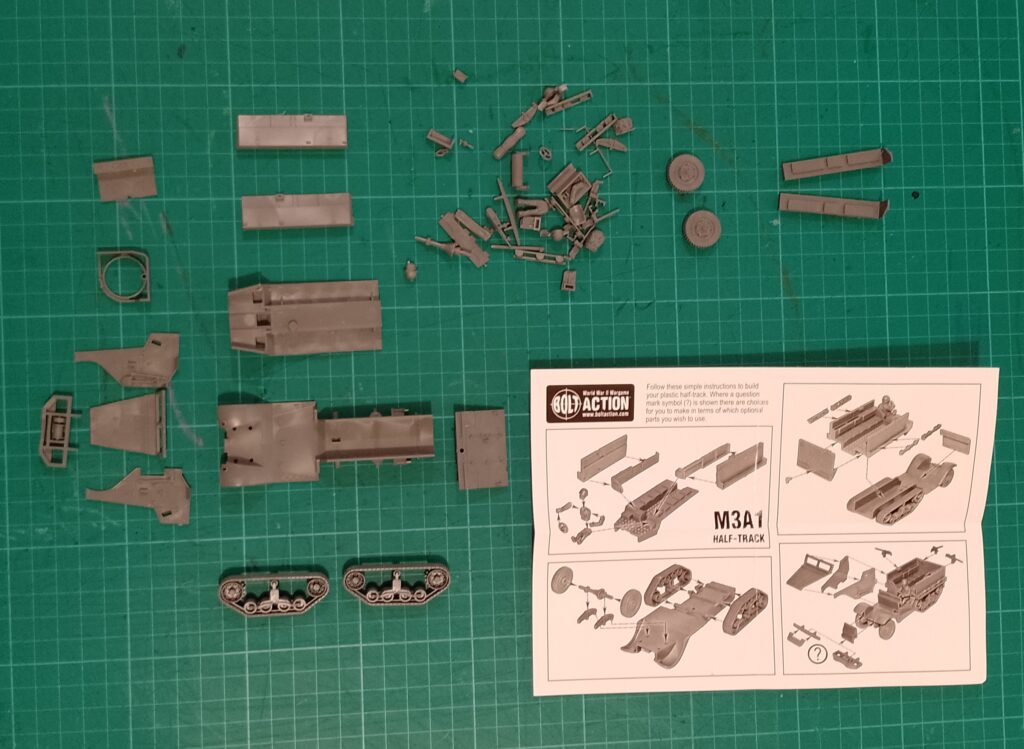
This is how I approach this kind of project. I try to keep it simple, but with at least a degree of depth to it. Once I’ve got these units (and probably a few more!) done, I’ll be back with a new article on the painting process!
MV – Andrés’ example shows just how weird and wonderful you can get by thinking outside the box. All of the units in his force will use rules from Armies of the United States – if you want to follow his example…
